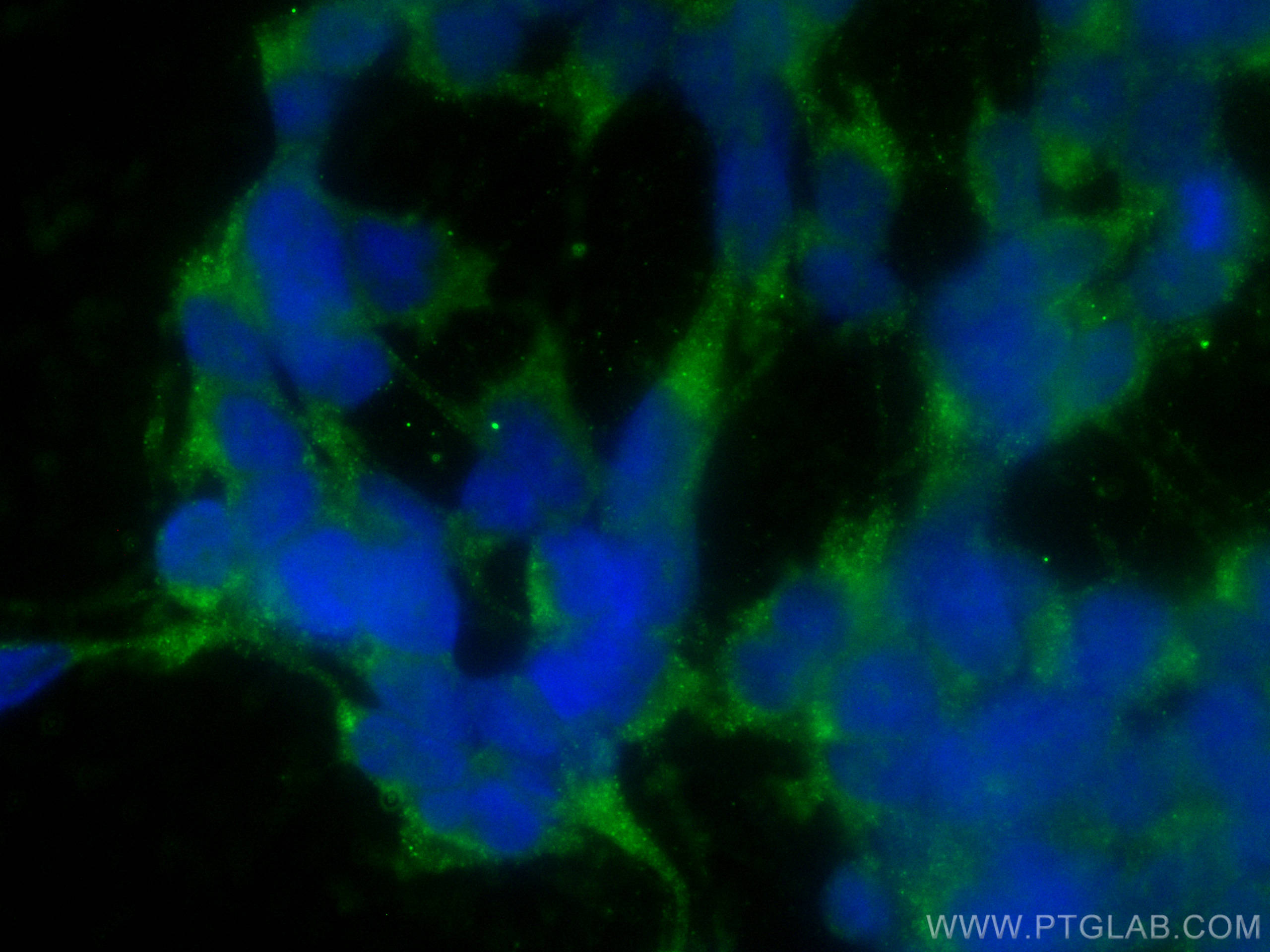CoraLite® Plus 488-conjugated Fibrillin 1 Polyclonal antibody
Fibrillin 1 Polyclonal Antibody for IF
Host / Isotype
Rabbit / IgG
Reactivity
human
Applications
IF
Conjugate
CoraLite® Plus 488 Fluorescent Dye
Cat no : CL488-26935
Synonyms
Validation Data Gallery
Tested Applications
| Positive IF detected in | SH-SY5Y cells |
Recommended dilution
| Application | Dilution |
|---|---|
| Immunofluorescence (IF) | IF : 1:50-1:500 |
| It is recommended that this reagent should be titrated in each testing system to obtain optimal results. | |
| Sample-dependent, Check data in validation data gallery. | |
Product Information
CL488-26935 targets Fibrillin 1 in IF applications and shows reactivity with human samples.
| Tested Reactivity | human |
| Host / Isotype | Rabbit / IgG |
| Class | Polyclonal |
| Type | Antibody |
| Immunogen | Fibrillin 1 fusion protein Ag25342 |
| Full Name | fibrillin 1 |
| GenBank Accession Number | BC146854 |
| Gene Symbol | FBN1 |
| Gene ID (NCBI) | 2200 |
| Conjugate | CoraLite® Plus 488 Fluorescent Dye |
| Excitation/Emission Maxima Wavelengths | 493 nm / 522 nm |
| Form | Liquid |
| Purification Method | Antigen affinity purification |
| Storage Buffer | PBS with 50% Glycerol, 0.05% Proclin300, 0.5% BSA, pH 7.3. |
| Storage Conditions | Store at -20°C. Avoid exposure to light. Stable for one year after shipment. Aliquoting is unnecessary for -20oC storage. 20ul sizes contain 0.1% BSA. |
Background Information
Fibrillin-1 belongs to the fibrillin family. Fibrillins are structural components of 10-12 nm extracellular calcium-binding microfibrils, which occur either in association with elastin or in elastin-free bundles. Fibrillin-1-containing microfibrils provide long-term force bearing structural support. Defects in Fibrillin-1 are a cause of Marfan syndrome (MFS), isolated ectopia lentis (EL), Weill-Marchesani syndrome autosomal dominant (ADWMS), Shprintzen-Goldberg craniosynostosis syndrome (SGS) or MASS syndrome. This antibody is specific to Fibrillin-1.
Protocols
| Product Specific Protocols | |
|---|---|
| IF protocol for CL Plus 488 Fibrillin 1 antibody CL488-26935 | Download protocol |
| Standard Protocols | |
|---|---|
| Click here to view our Standard Protocols |


